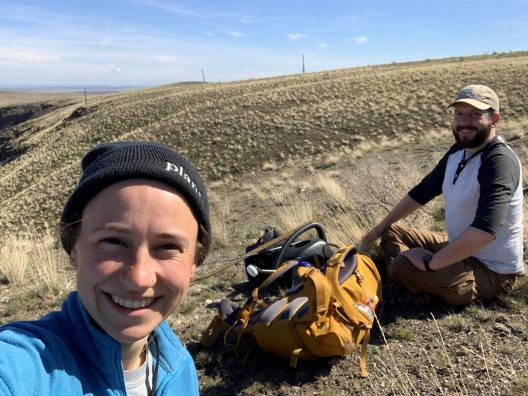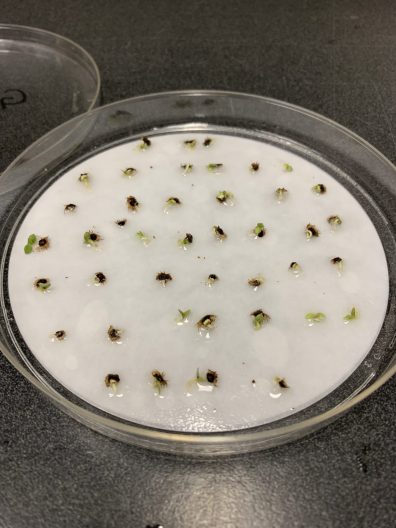Rare Care Research Project Updates

By Allie Howell
Allie Howell transitioned into Rare Care’s temporary Research Scientist position in February. Through September, she will be collecting field data, growing plants for outplantings, and helping with reporting on our many on-going research projects.
I have the exciting opportunity to delve deeply into several of this program’s ongoing projects.
So far, most of my work has been devoted to conducting vulnerability assessments on the rare alpine plants I monitored in the North Cascades, Olympic and Mt. Rainier National Parks this past summer as a Rare Care intern. These assessments synthesize existing information on each plant monitored for this project to evaluate how at-risk the species is in each park. Doing this work has given me the opportunity to read a vast array of papers about alpine ecology. These reports will help guide management decisions for each plant to ensure its continued survival.

I also have had the opportunity to germinate and grow what may be Washington’s rarest plant: showy stickseed. This species inhabits loose sandy soils that likely abrade the seed’s spikey outer shell and allow the plant to germinate. In the lab, however, emulating these conditions is difficult: using a microscope, I manually removed every embryo from its spiny pericarp and seed coat to liberate the tiny plant’s developing root. Quickly after this excision process, the seeds rapidly awoke from their dormancy and sent me into a planting frenzy. In the fall, these showy stickseed seedlings will be outplanted in their original habitat.
One of the most interesting projects I get to work on at Rare Care is a study geared towards understanding the factors that influence seedling survival in Umtanum Desert buckwheat (Eriogonum codium). Umtanum Desert buckwheat is listed as Endangered in Washington State because it is very vulnerable to extinction. The species inhabits a single ridgeline in eastern Washington, is not adapted to the area’s increasingly-frequent fires, and has seen almost no recruitment since its discovery in 1995. Work on this plant has allowed me to ponder many unanswered questions about this mysterious species: What is so special about this plant’s narrow ridgeline? Why have almost no seedlings survived to adulthood? What can we do to ensure this species isn’t wiped out by a single, poorly-placed fire?
While I have only been in this role for about two months, I have already learned so much about the impacts of climate change on alpine ecology, rare plant cultivation, and the mystery of Umtanum Desert buckwheat seedling survival. I am excited to continue learning even more in the coming months.